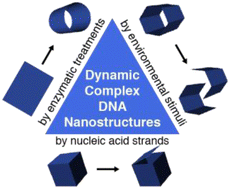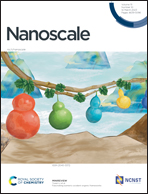Controllable dynamics of complex DNA nanostructures
Abstract
In the past four decades, a variety of self-assembly design frameworks have led to the construction of versatile DNA nanostructures with increasing complexity and controllability. The controllable dynamics of DNA nanostructures has garnered much interest and emerged as a powerful tool for conducting sophisticated tasks at the molecular level. In this minireview, we summarized the controllable reconfigurations of complex DNA nanostructures induced by nucleic acid strands, environmental stimuli and enzymatic treatments. We also envisioned that with the optimization of response time, sensitivity and specificity, dynamic DNA nanostructures have great promise in applications ranging from nanorobotics to life sciences.

- This article is part of the themed collections: Recent Review Articles and Emerging concepts in nucleic acids: structures, functions and applications


 Please wait while we load your content...
Please wait while we load your content...